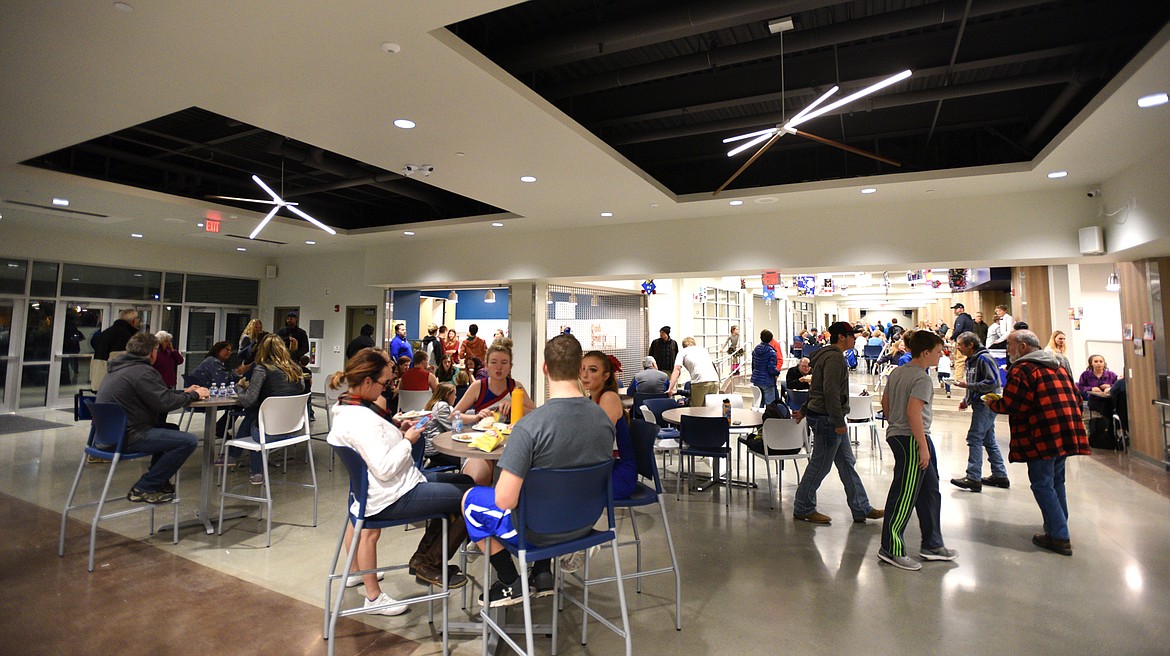Survey shows families supportive of going back to class
The vast majority of parents of Bigfork students are in favor of returning to in-person classes this fall, according to a survey conducted by Bigfork Schools. Nearly 350 individuals, including both students and parents, responded to the survey, representing about half of the families with students in attendance. The survey inquired about their level of comfort with students returning to campus, riding buses and wearing masks. The school also asked how people felt about returning to school in the event a student or staff member tested positive for the coronavirus. This would only occur following a three to five day transition to online learning that would allow the local health department to complete contact tracing.
Reactions were mixed on the latter issue — nearly 200 were mostly or very comfortable, while 54 were a little comfortable and 107 were not comfortable at all with the idea.
“The data suggests that the overwhelming majority have some concern if there’s another student or staff member testing positive,” said Superintendent Matt Jensen. “We definitely heard that and are taking that into consideration as we plan.”
Jensen said that based on input from parents, in the event someone on campus contracts COVID-19, another survey would be sent after contact tracing is complete to gain an accurate picture of how many students they could expect to return at that point.
But, when it came to returning to campus under the existing phase two conditions, a significant majority — 332 respondents — were in favor and just 27 were opposed to the idea.
About 10% of students have opted to continue remote learning for the fall semester.
“That’s fine,” Jensen said, “We just needed to know.”
The majority were also in favor of wearing masks at school with 128 being very comfortable and 146 indicating that they were mostly or a little comfortable with the idea. Another 85 said they were not comfortable at all. However, Jensen felt the question was a little outdated since the survey was issued prior to the imposition of Gov. Steve Bullock’s mask mandate. Based on subsequent feedback from parents, Jensen felt more people were coming around to the idea of their students wearing masks. According to the school’s reopening plan, face masks would be required during an entry screening process and in high-traffic areas — not in the classroom.
Survey results also indicate that more families will be driving their students to school rather than utilizing bus transportation services, which will likely lead to increased congestion. Kids also won’t be able to enter the building before the bell rings, meaning more people will be arriving around the same time period.
“All of that traffic channels through that one intersection,” Jensen said.
Once students do get to campus, they will be diverted to different entry points so no more than 50 will gather at any one location. Students will also be screened for COVID-19 before entering — older students will answer a series of questions, while younger kids will get their temperatures checked. If any student fails to pass the screening, they will wait in designated areas apart from the normal nursing stations. High school students will be able to drive themselves home, while elementary-aged kids will hang out until their parent or guardian can pick them up.
The biggest question mark schools are dealing with now is transitioning between phases. Jensen said they don’t have clear direction on what conditions would necessitate a shift to phase one or phase three, or when such shifts might occur. In the meantime, they’re doing their best to plan for multiple scenarios and are keeping their primary objectives front and center: staff and student safety and quality of education.
“As a school it’s pretty simple. We have two goals: the first goal is we want everybody to understand that we love our kids and we love our staff. These people are family to us. We want to do everything we can to mitigate the chances of them getting sick — or worse,” Jensen said. “The second point is we’re a school — at the end of the day, we have to make sure kids are learning. … If people can’t rally around those two ideas then we’re probably in trouble. There’s nothing political about either of those statements. We don’t have the opportunity or the luxury to make this political — we have a responsibility to keep people learning and keep people healthy.” ■

